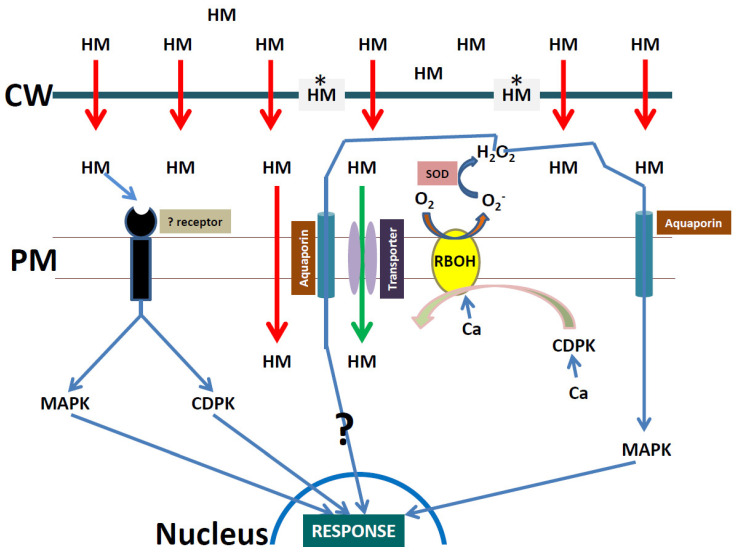Figure 2.
Scheme showing a putative heavy metal (HM) stress signaling cascade in plants. HMs move from outside the root through the cell wall (CW) into the apoplast by passive diffusion (red arrow). Some of the HMs are trapped (*) at the CW, but the apoplastic HMs can trigger the response of an unknown receptor, or actively move into the symplast via HM transporters (green arrow) located at the PM. HMs can also move through the PM via passive diffusion (red arrow). The unknown receptor signals responses to activate MAPK and CDPK, respectively, which can trigger a nuclear response. CDPK through calcium (Ca) activation phosphorylates NADPH oxidase (RBOH) in the presence of Ca, which induce a superoxide (O2−) burst in the apoplast. Superoxide dismutase (SOD) converts the O2− into hydrogen peroxide (H2O2), which moves through the aquaporins into the symplast. The H2O2 can trigger a nuclear response through an unknown mechanism (?) or activate MAPK, which triggers a nuclear response under HM stress.

